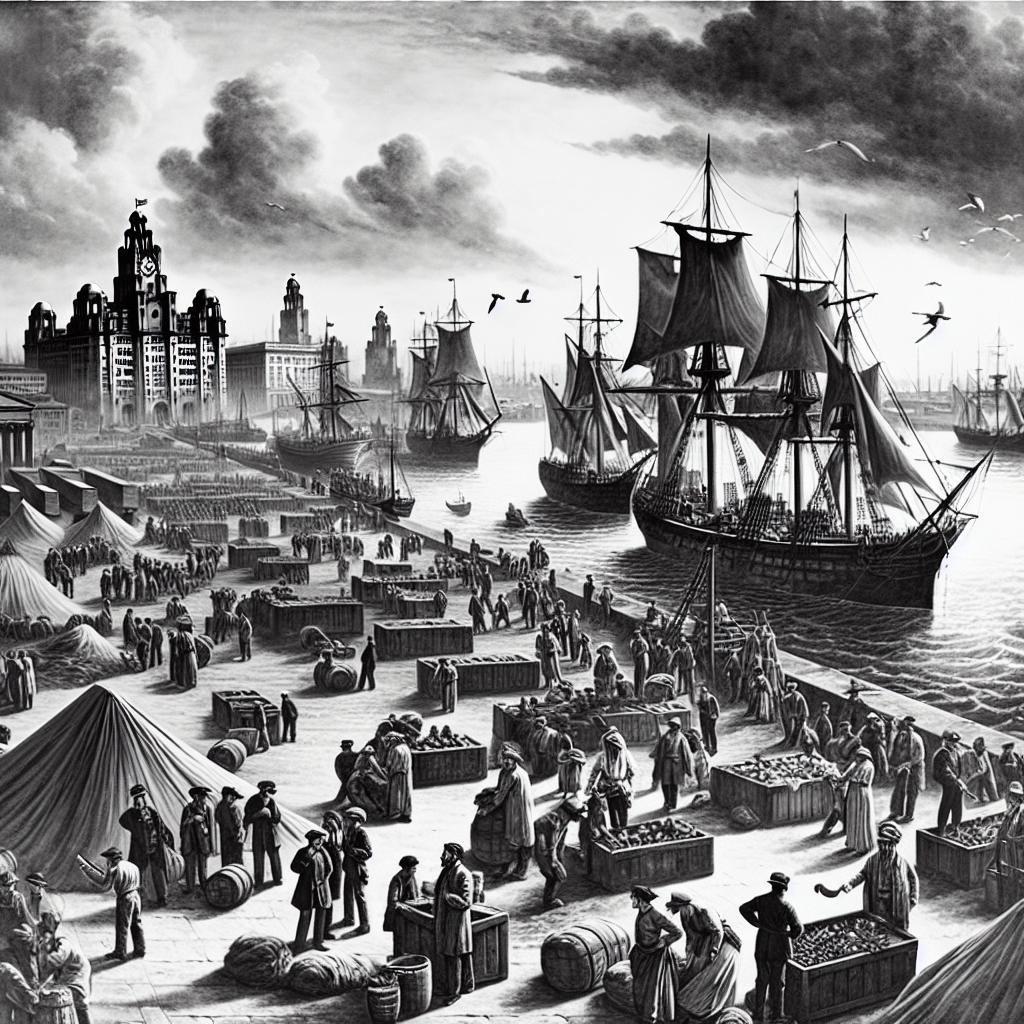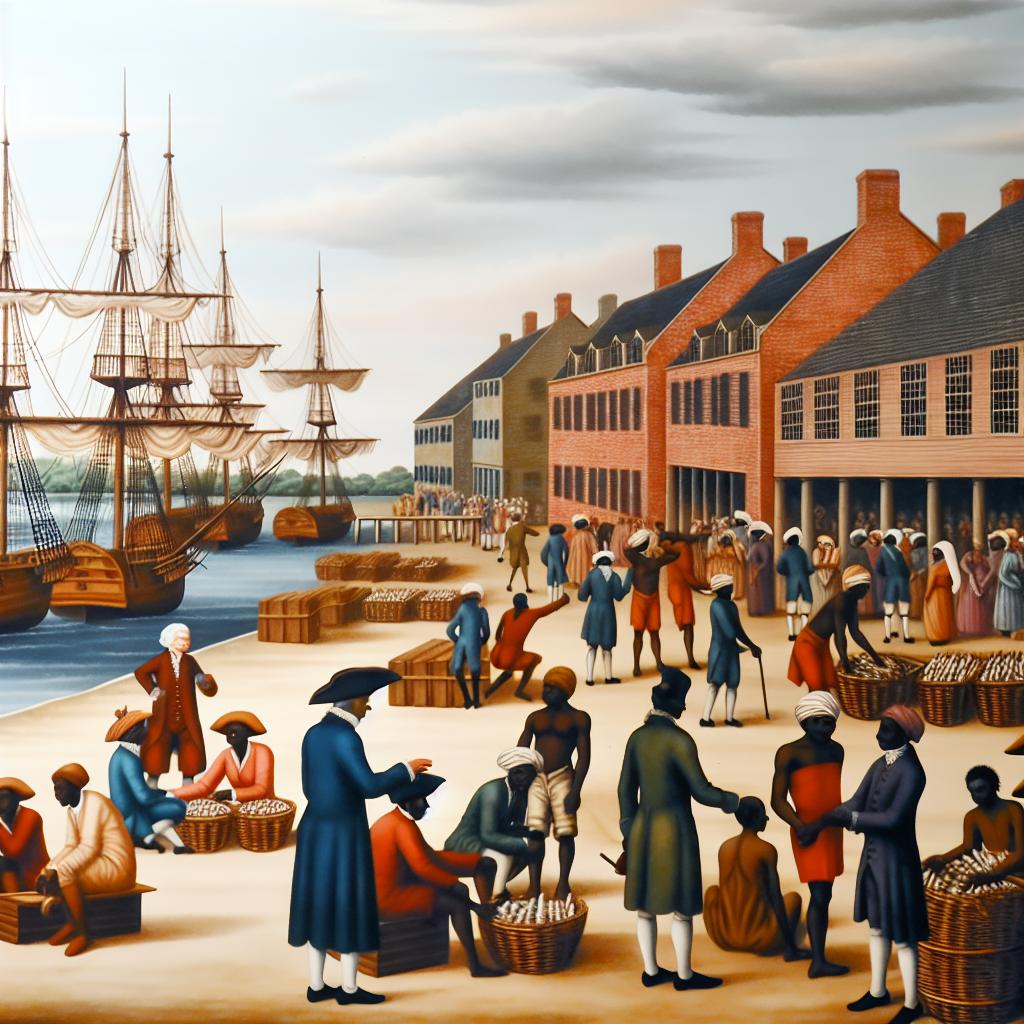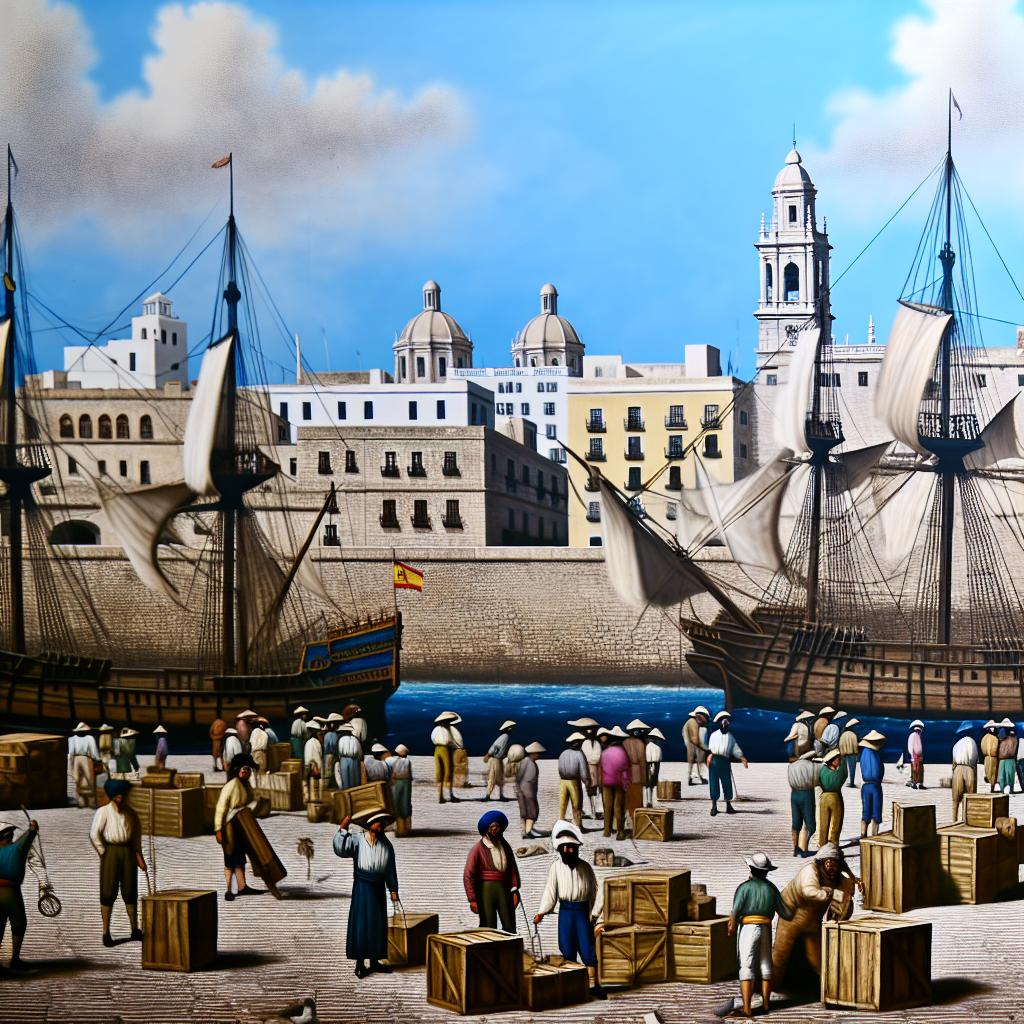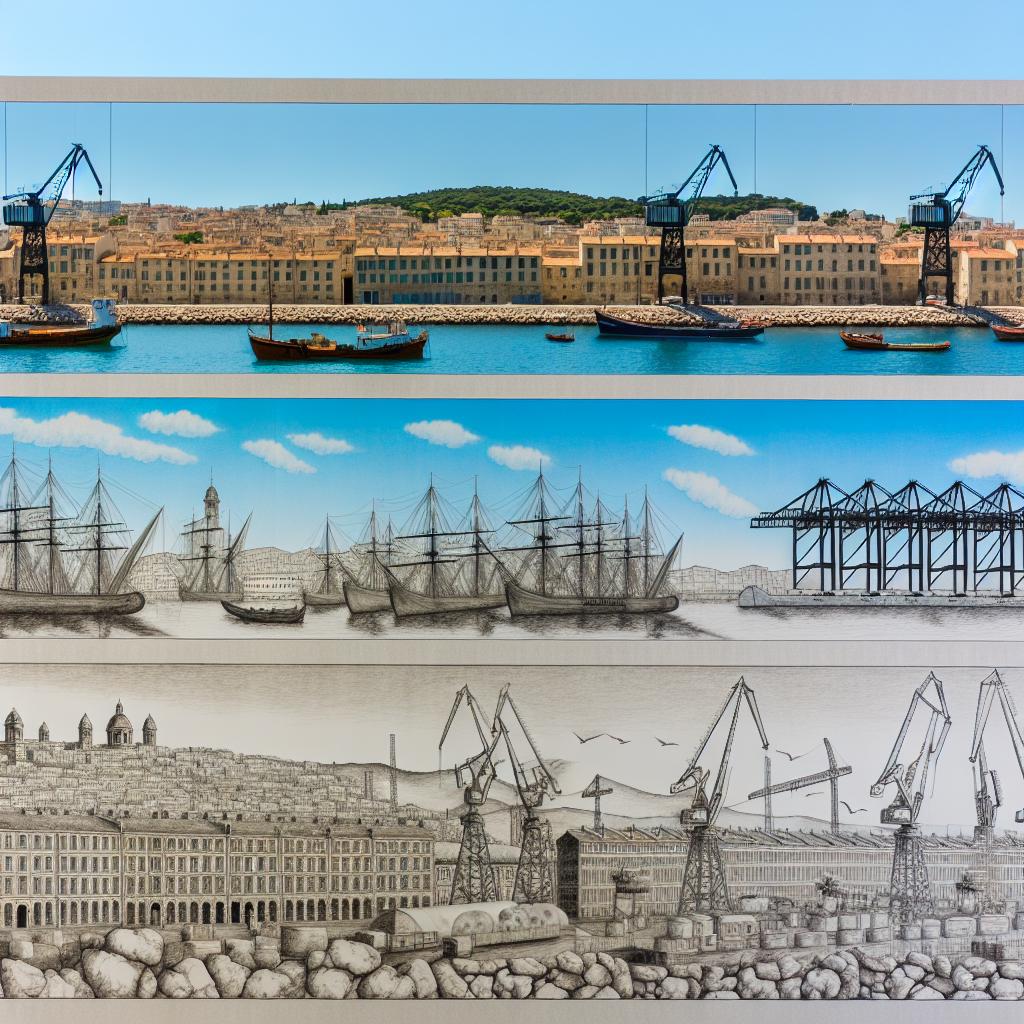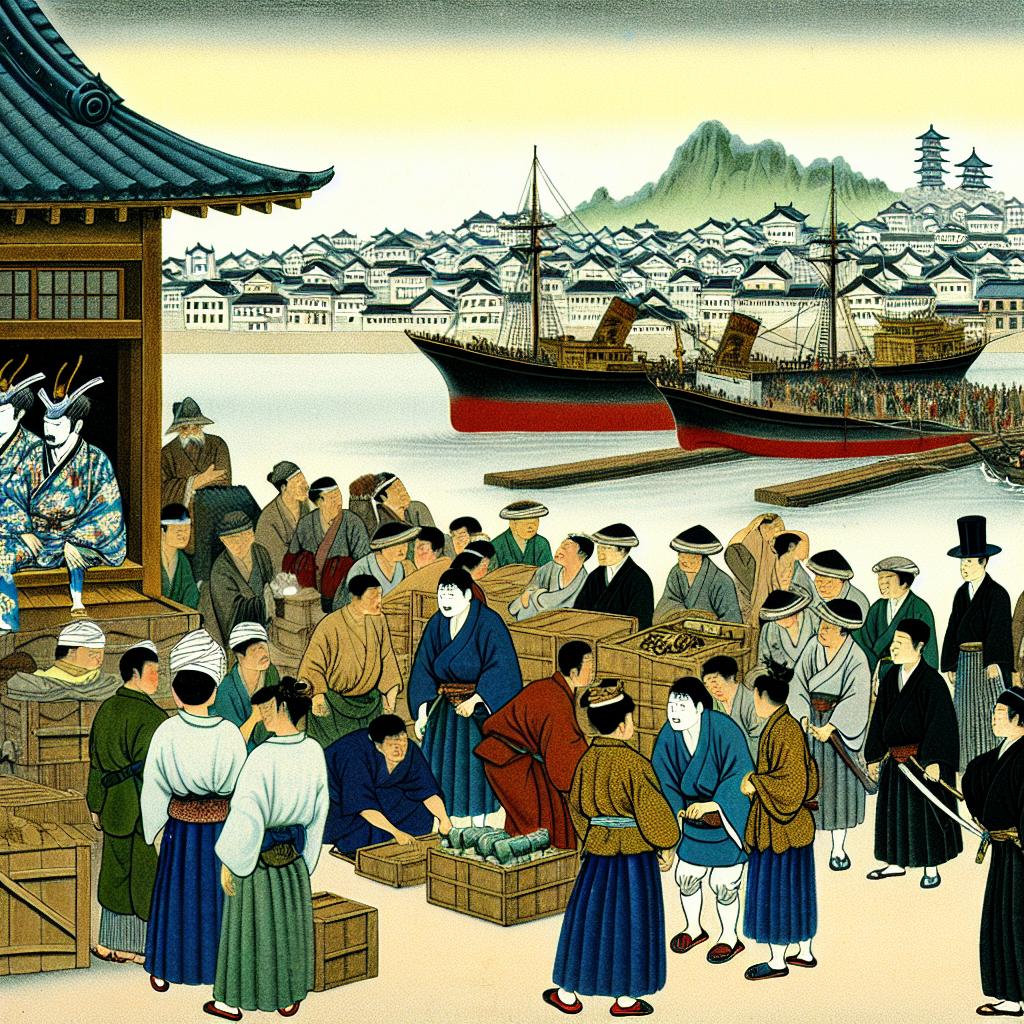The Port of Liverpool: A Gateway to the British Empire
In the 19th and early 20th centuries, the Port of Liverpool emerged as a central hub for trade and commerce, playing a vital role in the British Empire’s expansion. The city’s strategic location on the River Mersey, along with technological advancements from the Industrial Revolution, bolstered Liverpool’s status as a key player in global maritime activities. This period, often referred to as the “Age of Empire,” underscores the port’s importance in Britain’s colonial and economic pursuits.
Development and Growth
Liverpool’s rise from a small fishing village to a major international port began in the late 18th century. Critical to this transformation were the industrial advancements and rapid development of infrastructure, including the construction of docks and warehouses. The inauguration of the Albert Dock in 1846 set an innovative standard with its pioneering use of cast iron, brick, and stone, coupled with a revolutionary enclosed dock system.
This development allowed the port to accommodate large-scale trade, further boosted by the expansion of the railway network. The seamless connection between Liverpool and Britain’s industrial heartlands facilitated the swift transport of raw materials and finished goods, cementing Liverpool’s position as a crucial trade nexus.
The Role in the Slave Trade
An in-depth exploration of Liverpool’s history during the Age of Empire necessitates acknowledging its involvement in the transatlantic slave trade. By the 18th century, Liverpool had become one of the leading ports for transporting enslaved Africans. This somber chapter in the city’s history highlights how fortunes were amassed through the trade of human lives—a legacy that continues to evoke critical reflection and discourse.
Although the slave trade was abolished in 1807, the wealth accumulated through this inhumane practice laid the foundation for Liverpool’s subsequent prosperity and expansion, influencing its role in global commerce.
Trade and Industry
Throughout the 19th century, the port transitioned to more legitimate commercial ventures, such as cotton, textiles, and manufactured goods. The port’s ability to efficiently manage large cargo volumes played a crucial role in supporting the British textile industry, making Liverpool the primary transshipment point for raw cotton imported from the United States.
The port’s trade activities also included importing goods like tea, timber, and tobacco from British colonies, which in turn fueled local industries and urban growth. Furthermore, the port became a critical juncture for transatlantic migration, enabling the movement of emigrants from Europe to North America.
Socioeconomic Impact
The port’s robust economic growth spurred Liverpool’s transformation into a bustling metropolis. This prosperity attracted a diverse population, drawn to employment opportunities in the maritime and related industries. While this diversity enriched the city’s cultural tapestry, it also introduced challenges related to social integration and living conditions.
The rapid pace of urbanization led to issues like overcrowding, poor sanitation, and economic disparity, as the development of essential infrastructure and services struggled to keep pace.
In conclusion, the Port of Liverpool during the Age of Empire significantly contributed to Britain’s economy and global ambitions, while also influencing the city’s social and cultural framework. Its legacy is a complex tapestry comprising industrial achievements, ethical dilemmas, and transformative impacts, reflecting the multifaceted nature of Britain’s imperial past.
Economic and Infrastructural Developments
Liverpool’s transformation into a world-renowned port was not merely due to its geographical location; it was also a testament to the impressive strides in economic and infrastructural development. The Port of Liverpool’s docks and warehouses were continuously improved and expanded to accommodate growing trade demands. Notably, the Albert Dock, with its novel enclosed system, was a pivotal development in port technology, promoting efficiency in cargo handling and storage.
Maritime Technology and Innovation
The introduction of steam-powered vessels significantly altered the dynamics of maritime commerce. These ships, with their greater speed and capacity compared to traditional sailing ships, enabled quicker transits and more reliable schedules. Liverpool was at the forefront of these technological advancements, with many of the era’s most significant ships docking in its harbors.
The transition from sail to steam was accompanied by other technological innovations, such as enhanced navigation systems and improved safety protocols, which further established Liverpool as a leading maritime center.
Industrial Relations and Labor
The Port of Liverpool was also a microcosm of the broader industrial relations landscape of 19th and early 20th-century Britain. The bustling port required a vast workforce, ranging from dock workers to shipbuilders. Labor disputes and strikes were not uncommon, as workers sought to improve their often harsh working conditions and gain fair wages.
The development of trade unions in Liverpool was a direct response to the need for better labor conditions and rights, contributing to broader social changes within the city.
Cultural and Urban Development
The wealth generated from the port’s trade activities also fueled cultural and urban developments within Liverpool. The city witnessed the construction of grand public buildings, cultural institutions, and residential areas that reflected its burgeoning status and wealth. These developments were not merely for show; they embodied the aspirations and identities of a city at the heart of an empire.
In tandem with these material changes, Liverpool emerged as a cultural hub, producing a rich tapestry of music, art, and literature that reflected both its local dynamics and its global connections.
Legacy of the Port of Liverpool
The legacy of the Port of Liverpool is a multifaceted one, encapsulating achievements in trade, technology, and urban development, as well as sobering reflections on past injustices. As a microcosm of the British Empire’s global reach, the port was instrumental in facilitating international trade, shaping economic trends, and influencing global migration patterns.
Today, the story of the Port of Liverpool serves as a reminder of the intertwining paths of progress and exploitation, inviting ongoing reflection and dialogue about the ethical complexities of empire. This enduring legacy challenges us to consider how history can inform present and future maritime practices, ensuring they contribute positively to global society.
